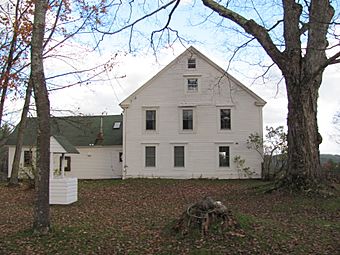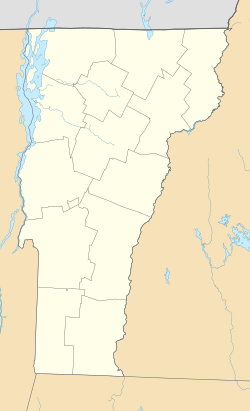Zachariah Spaulding Farm facts for kids
Quick facts for kids |
|
|
Zachariah Spaulding Farm
|
|
 |
|
| Location | Town Hwy. 38 (South Hill Rd.) S of Ludlow town center, Ludlow, Vermont |
|---|---|
| Area | 10 acres (4.0 ha) |
| Built | 1798 |
| MPS | Agricultural Resources of Vermont MPS |
| NRHP reference No. | 93001175 |
| Added to NRHP | November 4, 1993 |
The Zachariah Spaulding Farm is a special old farm in Ludlow, Vermont. It has a long history, starting way back in 1798. This farm is a great example of how farms used to work in the 1800s, growing many different things.
What makes it even more unique are the old parts of a sauna (a type of steam bath). This is because two families from Finland owned the farm in the 1900s. Because of its history and how well it's been kept, the farm was added to the National Register of Historic Places in 1993. This list helps protect important places in the United States.
Contents
What Does the Zachariah Spaulding Farm Look Like?
The Spaulding Farm covers about 10 acres (4.0 ha) of land. It's on the east side of South Hill Road. The land is mostly used for growing hay and for animals to graze. There are also some wooded areas further back.
Buildings on the Farm
The main buildings are grouped together near the front of the property. The farmhouse, built in 1798, sits about 50 feet (15 m) back from the road. It's a nice, two-and-a-half-story house made of wood.
Other old buildings on the farm include two barns from the 1800s. There's also a milkhouse and a storage shed. You can still see the foundations of a third barn that used to be there. There are also remains of a small building that was likely a sauna, built around the 1930s.
A Look Back in Time: The Farm's History
Zachariah Spaulding started this farm in the 1790s. He built the main farmhouse in 1798. Zachariah was an important person in his community. He worked in town government and even served in the state legislature.
What Did the Farm Produce?
Besides farming, Zachariah Spaulding also tried to make bricks on the property in the 1810s. However, he stopped because the clay from the nearby stream wasn't good enough. His son continued to farm the land until 1885, when it was sold to another family. The farm was actively used for many different types of farming until about 1974.



